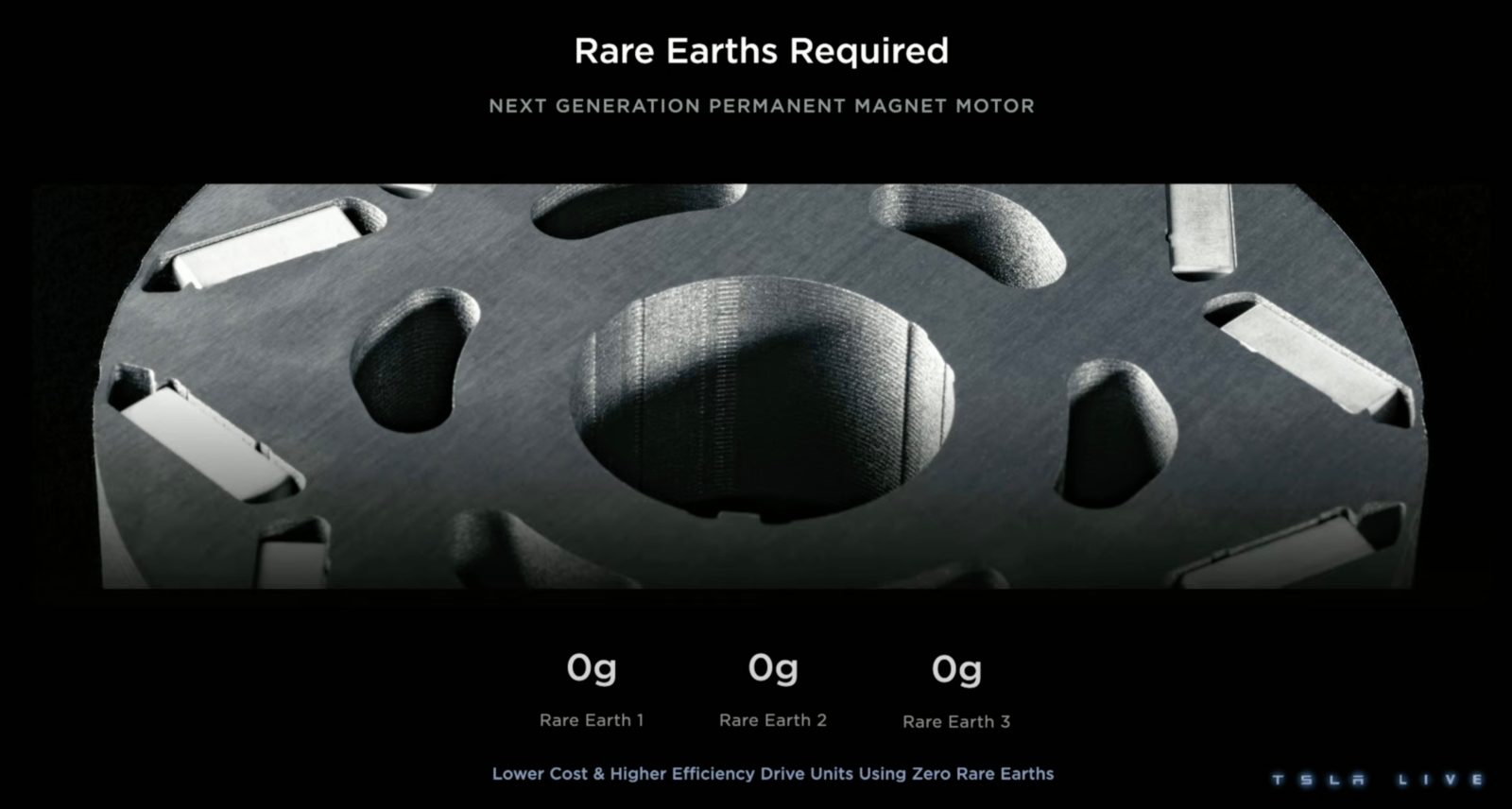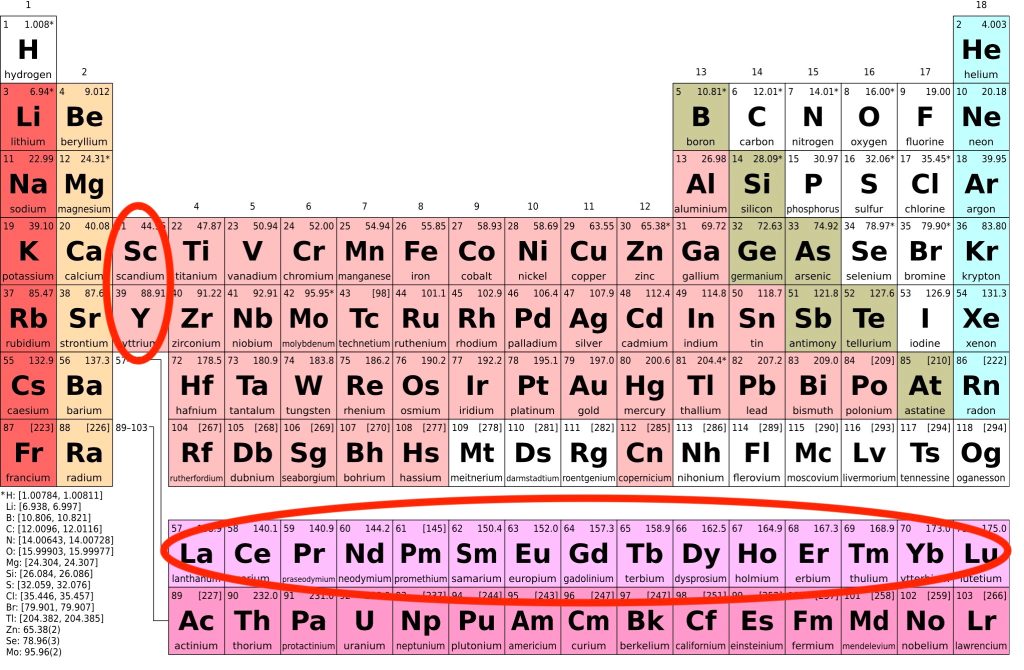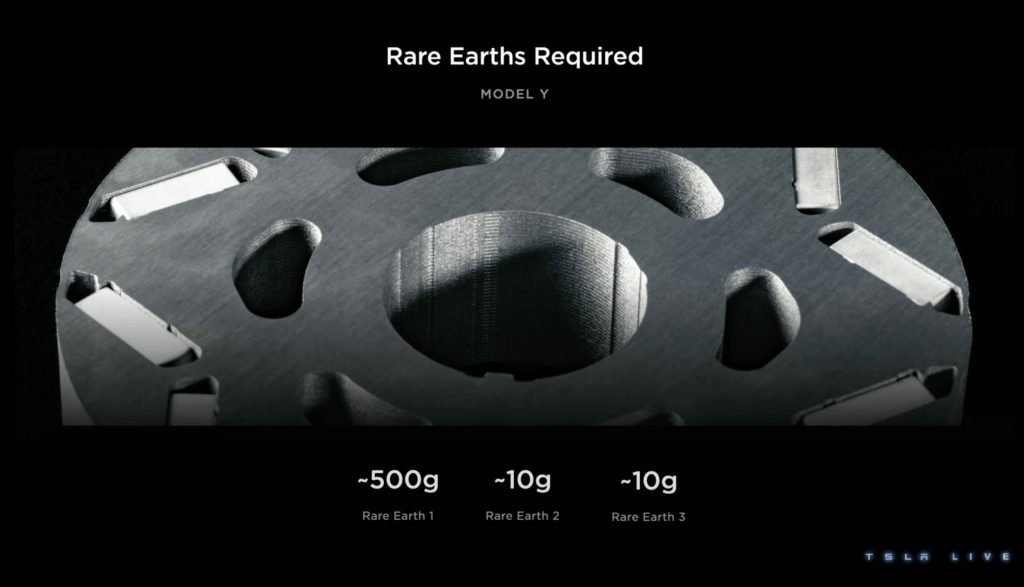
Tesla will create a permanent magnet electric vehicle motor with zero rare earth elements in it, the company announced at its Investor Day today.
Rare earth elements are a bone of contention in EV supply chains, as it can be hard to secure supplies of them, and a large majority of worldwide production is either sourced or processed in China.
This is important for several reasons, not the least of which is due to the Biden Administration’s current push for domestically produced electric vehicle component materials.
However, there are a lot of misconceptions about what a rare earth element is and how many of them are used by electric cars. In fact, lithium-ion batteries typically contain zero rare earth elements (though they do contain other “critical minerals” as defined in the Inflation Reduction Act).
On the periodic table, “rare earth elements” are those outlined in red in the graphic below – Lanthanides, plus Scandium and Yttrium. They are not actually all that particularly rare either, with Neodymium being about two-thirds as abundant as copper.

The rare earth elements in an EV are used in electric car motors rather than batteries. The most used is Neodymium, which is used in powerful magnets for speakers, hard drives, and electric motors. Dysprosium, Terbium and Praesodymium are commonly used as additives in Neodymium magnets.
Further, rare earth elements are not used in every type of electric car motor – Tesla uses them in DC permanent magnet motors but not in its AC induction motors.
Originally, Tesla used AC induction motors in its vehicles, which did not need rare earth elements. In fact, this is where the company got its namesake – Nikola Tesla was the inventor of the AC induction motor. But then when the Model 3 came out, the company introduced a new permanent magnet motor and eventually started using these motors in its other vehicles as well.
Tesla stated today that, between 2017 and 2022, it managed to reduce rare earth usage in these new Model 3 drive units by 25% as it increased the efficiency of the drivetrain.
But now it looks like Tesla is trying to get the best of both worlds: a permanent magnet motor, but without rare earth elements.
Top comment by OV
The main alternative to neodymium iron boride as a permanent magnet is simple ferrite (iron oxide, typically with barium or strontium additives). You can always make a permanent magnet stronger by simply using more magnet, but space inside a motor rotor is limited and neodymium iron boride gives you so much more magnetisation with a smaller amount of material. Other permanent magnet materials on the market include AlNiCo (aluminium-nickel-cobalt alloys), which perform well at high temperature but easily lose their magnetisation, and samarium cobalt, another rare earth magnet that is similar to NdFeB but handles high temperature better. Research is underway into a range of alternative materials, mostly targeting the gap between ferrites and rare earths, but this is still in the lab, not in serious production.
I suspect Tesla have found a way to use ferrite magnet rotors. If they've been reducing the amount of rare earths, that'll mean they've been reducing the amount of permanent magnet in the rotor. I'm willing to bet that they've decided to get their lower-than-normal magnetic flux from a big chunk of ferrite, rather than a small chunk of NdFeB. I could be wrong, and they could have buddied up with one of the pilot-scale alternative materials. But that seems unlikely to me - Tesla are gunning for high-volume production, which basically means either rare earths or ferrites.
During its Investor Day presentation, Tesla showed a slide comparing its current rare earth usage in the Model Y permanent magnet motor with a potential next-generation motor:


Tesla was not specific about which elements it uses, perhaps considering that information a trade secret that it doesn’t want to let out. But the first number is likely Neodymium, and the others could be Dysprosium and Terbium.
As for the future motor – well, we really aren’t sure. Tesla’s graphic states that the next motor will include a permanent magnet, but the magnet will not use rare earth elements.
Neodymium-based permanent magnets have been the standard for applications like this for some time, but there has been research over the last decade looking into other potential materials which could replace it. While Tesla has not specified which one it plans to use, it seems to be close to a decision – or at least sees the possibility of sourcing a better solution in the near future.
FTC: We use income earning auto affiliate links. More.




Comments